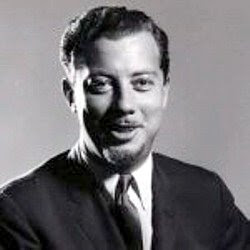
"Why Try to Change Me Now" was composed by Cy Coleman (the music) and Joseph Allan McCarthy (the words) for Frank Sinatra. Sinatra recorded it on September 17, 1952. It was arranged by Percy Faith. More from Sinatra 101: The 101 Best Recordings and the Stories Behind Them:
Sinatra's last recording for Columbia Records--and appropriate in the context of his life. Gone was the innocent, naive singer of the previous decade. Burned by love, the singer is able to convey the darkness, the sadness, and the cynicism that would characterize much of his work in the years to come. (p. 35)
Sinatra would re-record it while under contract with Capitol Records for the No One Cares album in 1959.

Here is Cy Coleman's utterly charming, 1957 performance of "Why Try to Change Me Now," from something called "Art Ford's Greenwich Village Party," which appeared to be somewhat like a precursor to the Playboy After Dark TV program of the late '60s. Coleman, by the way, also wrote "Witchcraft" for Sinatra:
















